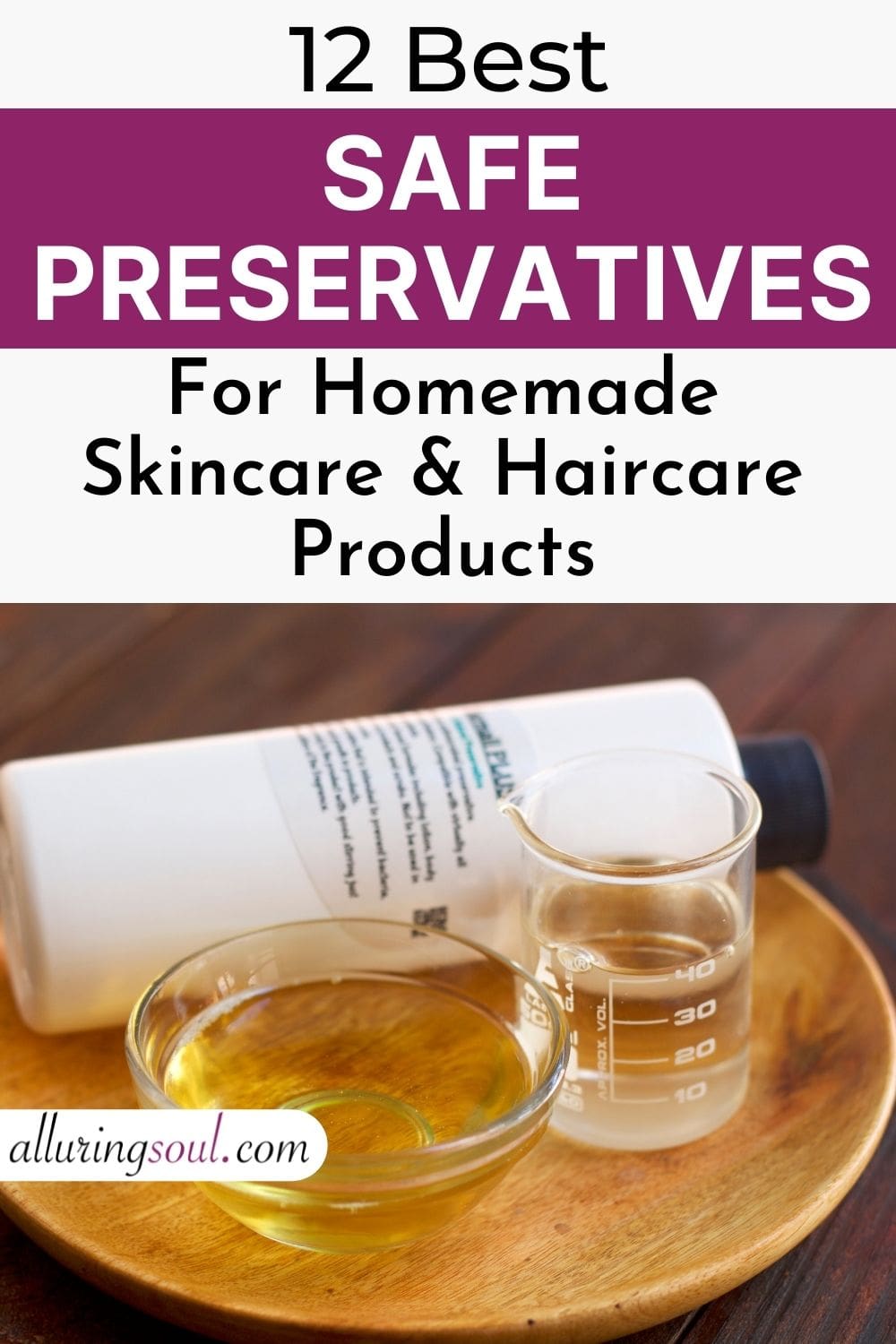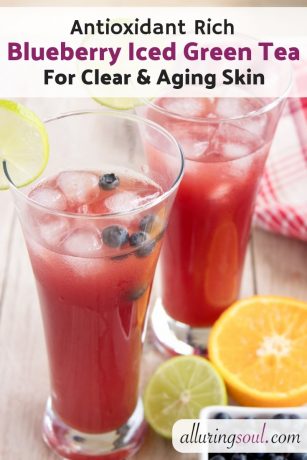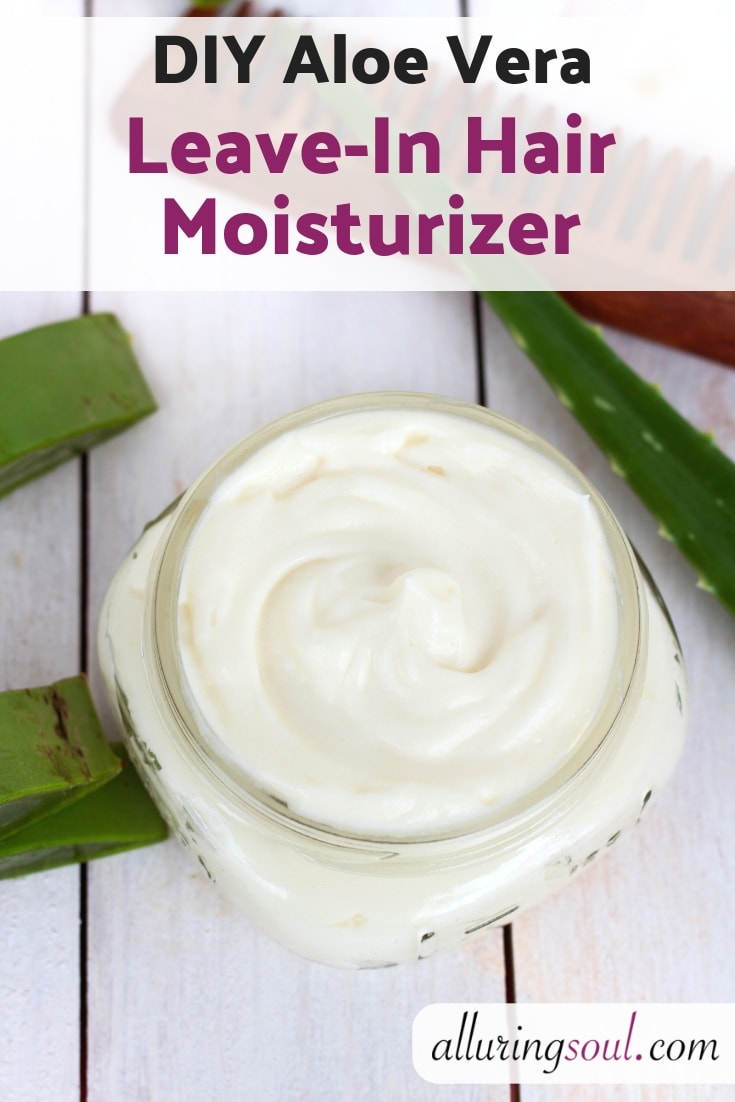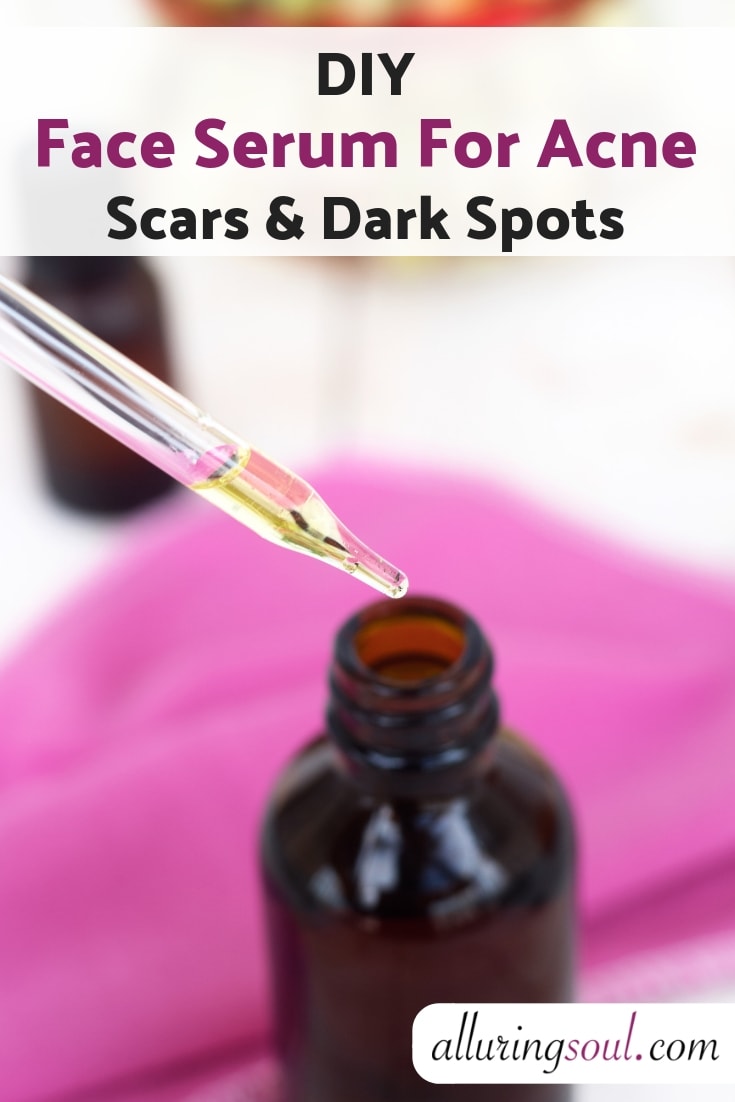Ever wondered how your cosmetics stay on the shelf for such a long time? It is not hard to guess the role that preservatives play in cosmetics. Not just on food, preservatives also ward off the growth of microorganisms in cosmetic products and increase their shelf life. But there are many preservatives out there which makes it difficult to choose which one is safe to use. Let’s take a look at the list of safe synthetic and natural preservatives for homemade cosmetics and why they are needed in cosmetics.
What Are Cosmetic Preservatives?
Any natural or synthetic substance that can prolong the shelf life of the cosmetics is referred to as cosmetic preservatives. Depending on whether the preservative is extracted from natural sources or produced in a laboratory, it can be classified as natural or synthetic.
Although in some cosmetics, vitamin C and Vitamin E are labeled as cosmetic preservatives, they are not really so. Both the vitamins have some antioxidant and antimicrobial effects that can keep the cosmetic product fresh for a while, but their effect is not as good as actual preservatives.
Why Are Preservatives Important For Homemade Cosmetics?
Since a myriad combination of chemicals is used to formulate cosmetics, it is difficult to predict how these chemicals will interact with the environment in the long run. Using a preservative helps keep the cosmetic product fresh and effective. The main reasons why preservatives are used in cosmetic products are as follows:
1. Cosmetic preservatives prevent the growth of bacteria and fungi in cosmetics. Most cosmetics contain oil and water phases and are stored in closed containers. This environment is congenial for bacterial growth. Using cosmetic preservatives, bacterial outgrowth can be avoided.
2. Once a water-based cosmetic product is opened for use, it is susceptible to contamination. Due to regular use, bacteria from the outside environment can affect the product.
3. Most bacteria live in an alkaline environment with a pH above 10. Cosmetic preservatives maintain the pH of the product in the range of 4.5 to 7 which is similar to the natural pH of the skin. Thus preservatives maintain the pH balance of the product.
4. Preservatives also prevent the oxidation of the product from exposure to the external environment.
What Cosmetic Products Need Preservatives?
Almost every cosmetic product, especially homemade ones needs preservatives to retain their action. Here is a breakdown of different types of cosmetics and why they need preservatives:
1. Lotion and Creams
Necessity: Yes
All lotions and creams need preservatives. This is because all lotions and creams have an oil base and a water base held together in a stable emulsion. Since all bacteria need moisture to thrive, lotions and creams without preservatives will be ideal for bacterial growth.
If preservatives are not added to lotions, the lotion or cream might get moldy. Although sometimes the bacterial growth might not be visible, it will cause infection on your skin.
2. Hair Conditioner and Shampoo
Necessity: Yes
Another group of products that require preservatives is shampoos and conditioners. Similar to lotions, shampoos and conditioners also have both oil and water bases that attract bacterial growth. Additionally, these products are usually kept in the bathroom which is subject to humidity and repeated exposure to the outside environment. Without preservatives, shampoos and hair conditioner will lose their efficiency and can cause adverse effects on the scalp and hair.
3. Face Serum and Body Oil
Necessity: No
Face serums and body oils are simply oils. They do not have any water content in them and thus the chances of contamination or bacterial growth are negligible. This is the reason why most face serums and body oils do not have any preservatives in them.
4. Body Butter, Salve, and Balm
Necessity: No
Body butter, salves, and balms are simply oil-based cosmetics. Although there is a risk of these products turning rancid, it takes a very long time to settle in. The lack of any water in body butter and balms eliminates the need to use preservatives in them.
5. Body Scrubs and Face Scrubs
Necessity: No
Body scrubs and face scrubs generally contain salt and sugar to induce the scrubbing action. As they do not contain water, it is not necessary to use preservatives in them.
However, it is important to note that body or face scrubs are kept in bathrooms. The humid environment can introduce moisture from outside to the scrubs and promote bacterial growth. Keeping this scenario in mind, it will be beneficial to add preservatives to them.
6. Body and Face Cleanser
Necessity: Yes
Body or face cleansers are an emulsion of water and oil. This means that a preservative is needed to prolong its shelf life and protect it from bacteria and contamination.
7. Soap
Necessity: No
Soaps do not need preservatives. This can sound surprising considering the fact that soaps are in regular contact with water. Irrespective of the process used to make them, all soaps are contained in a specific pH range that does not allow the bacteria to grow on them.
Both Cold Process and Melt and Pour Process soaps have no need for preservatives. But it can be added to liquid soaps as a precautionary measure.
Are Antioxidants And Essential Oils Preservatives?
No, antioxidants and essential oils cannot be considered preservatives.
Most preservatives are a combination of various substances that collectively work to prevent the growth of all types of microorganisms such as bacteria, fungi, mold, and yeast. They are thus referred to as ”broad spectrum” substances.
On the other hand, antioxidants like essential oils, rosemary CO2 extract, vitamin E and Vitamin C simply prevent oxidation of cosmetic products. They can prevent the products from turning rancid and foul-smelling but have no protection against microbial growth. Thus, antioxidants are not preservatives.
Is Glycerin A Preservative?
No, glycerin is not a preservative.
Glycerine is mostly added in cosmetics as a humectant, that is, to draw water from the atmosphere into the skin. To make glycerin act as a preservative, its concentration must be 50% or more.
Since the usual usage rate of glycerin in cosmetics does not go above 10%, it cannot be used as a preservative. Most importantly, a concentration of 50% glycerin will be extremely greasy and unfit for application on the skin.
Is Citric Acid A Preservative?
No, citric acid is not an actual preservative.
It is true that citric acid can act as an antioxidant and prevent cosmetic products from turning rancid. It also maintains the pH of the cosmetic products in the range of 3-6. However, it cannot protect the cosmetic from all types of microorganisms and thus cannot be called a preservative.
Additionally, usage of citric acid in cosmetics has been linked to irritation, redness, and allergic reactions and hence it is advised not to be used in higher concentrations.
List Of Natural Preservatives For Homemade Cosmetics
1. Geogard ECT (Preservative ECO, Plantaserv M)
- INCI: Benzyl Alcohol (and) Salicylic Acid (and) Glycerin (and) Sorbic Acid
- Appearance: Clear liquid
- Usage Rate: 0.6-1%
- Optimum Temperature: 45oC
- pH – 3 – 8
- Solubility – water soluble
Made from benzyl alcohol, salicylic acid, and sorbic acid, Geogard ECT is a completely natural preservative. Geogard ECT meets all ECOcert and COSMOS standards. It is a non-paraben, non-formaldehyde preservative system. However, due to the presence of salicylic acid, it is not recommended for use in products for children under 3 years of age.
It is fragrance-free and works well on a very wide pH range. It’s a liquid that is added to the cooling phase of cream, lotions, and other skincare and haircare products.
2. Leucidal SF Complete
- INCI: Lactobacillus Ferment and Lactobacillus Cocos Nucifera
- Appearance: Clear to hazy liquid
- Usage Rate: 2-4%
- Optimum Temperature: It is stable up to 70oC
- pH – 3 -8
- Solubility – water
Leucidal SF Complete uses Lactobacillus to create an acidic environment that kills any microorganisms that threaten to degrade the cosmetic product. It also produces antimicrobial peptides. It is a broad spectrum preservative and is cleared by all COSMOS and ECOcert standards.
The fermentation of coconut by Lactobacillus also produces Medium Chain Triglycerides which are lipopeptides. These peptides have antifungal properties and can destroy the cells of the fungus.
Leucidal SF Complete is GMO-free and uses no hydrogenation, sulphonation, ethoxylation, irradiation, or ethylene oxide during the manufacturing process.
3. Leucidal Liquid Complete
- INCI: Leuconostoc/Radish Root Ferment Filtrate and Lactobacillus and Cocos Nucifera
- Appearance: Clear to hazy liquid
- Usage Rate: 2-4%
- Optimum Temperature: 35-40C
- pH – 3 -8
- Solubility – water
Leucidal Liquid Complete uses two types of antimicrobial technology to offer its preserving property. Leuconostoc kimchii is a lactic acid bacteria that limits microbial growth by making the cosmetic environment acidic. Additionally, it can also produce antimicrobial peptides.
Leucidal Liquid Complete is a broad spectrum preservative and conforms to all COSMOS and ECOcert standards. It is not manufactured through hydrogenation, sulphonation, ethoxylation, or the usage of ethylene oxide.
Simultaneously, Lactobacillus also ferments coconut to generate additional antimicrobial peptides. 50% of coconut contains Medium Chain Triglycerides that can prevent fungal growth by destroying their cell structures. The antifungal action is exhibited by lipopeptides that are produced during fermentation.
4. Leucidal SF Max
- INCI: Lactobacillus Ferment
- Appearance: Transparent to slightly yellow liquid
- Usage Rate: 2-4%
- Optimum Temperature: Room temperature of 23 – 25°C. Excess heat or cold may damage the product.
- pH – 3 – 8
- Solubility – water
Leucidal SF Max is a natural preservative that is made by fermentation of Lactobacillus in a growth medium. This preservative is free from salicylic acid and dependent on probiotics for its action.
The Lactobacillus in Leucidal SF Max acidifies the environment and restricts the growth of other microorganisms. In addition to this, it also produces a class of antimicrobial peptides called bacteriocins that act as a “broad spectrum” preservative. Use with AMTicide Coconut for added protection against yeast and mold.
Leucidal SF Max adheres to all the COSMOS and ECOcert standards. The process of making this preservative does not involve any hydrogenation, ethoxylation, sulphonation, or usage of ethylene oxide.
5. AMTicide Coconut
- INCI: Lactobacillus and Cocos Nucifera Extract
- Appearance: Clear to hazy liquid
- Usage Rate: 2-4%
- Optimum Temperature: Stable up to 70°C
- pH – 3 -8
- Solubility – water
AMTicide coconut was manufactured after exploring the antifungal effect of the Medium Chain Triglycerides (MCT) like lauric acid that is obtained during the fermentation of coconut.
The lipid portion of the pericarp of coconut is fermented using Lactic Acid Bacteria (LAB) to release natural phytocompounds. These phytocompounds are very effective in fighting the growth of yeast and mold in cosmetics.
Generally, AMTicide Coconut is used together with Leucidal Liquid SF to deliver the action of a broad spectrum preservative. During the manufacturing process, no ethoxylation, sulphonation, hydrogenation, or usage of ethylene oxide is involved. It is free from GMT and passes all COSMOS and ECOcert standards.
6. Phytocide Elderberry OS
- INCI: Sambucus nigra Fruit Extract
- Appearance: Clear to hazy liquid
- Usage Rate: 1-5%
- Optimum Temperature: Below 75°C
- pH – 3 -8
- Solubility –Insoluble in water, soluble in oils
Elderberries are a rich source of phytonutrients that exhibit antioxidant and anti-inflammatory properties. The phytonutrients present in elderberries include chlorogenic acid, caffeic acid, ferulic acid, and quercetin. Undecylenic acid in elderberries has antifungal action. Elderberries also contain bioflavonoids that act as astringent and can tighten the skin and reduce wrinkles. Additionally, elderberries also contain antioxidants that fight free radicals.
It is oil-soluble, and therefore, can be used in a variety of anhydrous and oil-containing applications. Elderberry OS is a broad-spectrum preservative. It also adheres to COSMOS and ECOcert standards.
7. NeoDefend (GeoGard Ultra, MicroGuard)
- INCI: Gluconolactone and Sodium Benzoate
- Appearance: Off white powder
- Usage Rate: 0.75-2%
- Optimum Temperature: Stable at all temperatures
- pH – 3 -6
- Solubility –Soluble in water, propylene glycol, glycerin and mineral oil
Unlike other preservatives which kill bacteria and other microorganisms, NeoDefend works using a “Hurdle Technology”. It creates a physical and chemical environment that makes it difficult for the bacteria to survive. Due to its heat stability, NeoDefend may be added to the water phase of formulations early in the compounding process.
Gluconolactone in NeoDefend is a gluten-free starch derived from the fermentation of corn. It is a Polyhydroxy acid (PHA) that has the ability to hydrate the skin and reduce wrinkles. Sodium benzoate is another component of NeoDefend that acts as a preservative in acidic conditions due to its bacteriostatic and fungistatic properties.
However, it should be noted that when sodium benzoate comes in contact with ascorbic acid (Vitamin C) or benzoic acid, it can convert to benzene which is a potential carcinogen. Thus this combination should be avoided while formulating cosmetics.
It is a broad-spectrum preservative and is accepted under ECOcert standards.
8. Euxyl® K 903
- INCI: Benzyl Alcohol and Benzoic Acid and Dehydroacetic Acid and Tocopherol
- Appearance: Light to dark yellow liquid
- Usage Rate: 0.4-1.2%
- Optimum Temperature: 8-25°C
- pH – 3 -6
- Solubility – limited water solubility
Euxyl® K 903 contains benzyl alcohol (78.0 – 84.0%), benzoic acid (11.0 – 13.0%) and dehydroacetic acid (6.5 – 7.5%). It is found to be most effective at a pH of 6 and in non-ionic systems. The combination of benzyl alcohol and benzoic acid makes a gentle preservative that is free from parabens and formaldehyde.
The presence of organic acids makes Euxyl® K 903 a broad spectrum preservative that is active against both gram-positive and gram-negative bacteria. The efficiency of these acids is found to improve as the pH reduces and they become biocidal active.
Euxyl® K 903 condoms to all COSMOS and ECOcert standards.
Since the preservative has lipophilic components, it is not completely water soluble; at 20°C, 100g of water will dissolve 1.2g of Euxyl® K 903. For water-based products, a solubilizer will be required to incorporate it into the water, however, it is best used in products that contain an oil phase.
List Of Safe Synthetic Preservatives For Homemade Cosmetics
1. Germaben II
- INCI: Propylene Glycol (and) Diazolidinyl Urea (and) Methylparaben (and) Propylparaben
- Appearance: Clear viscous liquid
- Usage Rate: 0.5-1%
- Optimum Temperature: Below 60°C
- pH – 3 – 7.5
- Solubility – water
Germaben II has its active ingredients Diazolidinyl Urea, Methylparaben and Propylparaben dissolved in propylene glycol. It is useful for all cosmetics that have an oil phase greater than 25% and it does not contain formaldehyde.
Germaben II is heat sensitive and care should be taken to the water phase or the emulsion during the cooling stage. It is a broad-spectrum preservative.
2. Liquid Germall Plus
- INCI: Propylene Glycol (and) Diazolidinyl Urea (and) Iodopropynyl Butylcarbamate
- Appearance: Clear viscous liquid
- Usage Rate: 0.1-0.5%
- Optimum Temperature: Below 50°C
- pH – 3 – 8
- Solubility – Soluble in water and oil both
Germall Plus dissolved in 60% propylene glycol makes liquid Germall Plus. It can be used in a pH range of 3 to 8 in cosmetic products that contain a high amount of water. It is a paraben-free preservative.
Liquid Germall Plus is ideally used in emulsions of all kinds, that is, water-in-oil and oil-in-water type emulsions. Although it can be used in cosmetic products for all people including cremas, lotions, conditioners, and shampoos, it is recommended not to be used for products designed for children under 3 years of age. Additionally, it is not designed for aerosol-based products.
Liquid Germall Plus is heat sensitive and should be added to the water phase or to the emulsified portion of the formulation at a temperature of 122°F (50°C) or below, during the cool-down stage.
3. Optiphen Plus
- INCI: Phenoxyethanol and Caprylyl Glycol and Sorbic Acid
- Appearance: Clear, pale to dark yellow liquid
- Usage Rate: 0.75-1.5%
- Optimum Temperature: Below 80°C
- pH – 3 -6
- Solubility – Soluble in water and oil both
Optiphen Plus is manufactured using phenoxyethanol and sorbic acid in an emollient base of caprylic acid. It is ideal for slightly acidic cosmetics under a pH of 6. It contains no formaldehyde or parabens.
Being a broad-spectrum preservative, it is effective against all forms of gram-positive and negative bacteria, yeast, and mold. Optiphen Plus is also compliant with all COSMOS and ECOcert norms.
4. Phenoxyethanol
- INCI: Phenoxyethanol
- Appearance: Clear liquid with a floral rose odor
- Usage Rate: 0.5-1%
- Optimum Temperature: Stable up to 85°C
- pH – 3 – 10
- Solubility – soluble in most oils. It is also soluble in water from 0.5 to 2.67 grams per 100 grams of water. It is miscible with propylene glycol and glycerin.
Phenoxyethanol is active in a pH range of 3 to 10. It is generally rendered inactive by highly ethoxylated compounds and should be saturated with water in surfactant systems to make it active. In low levels, it will act as a nutrient for bacteria.
Since phenoxyethanol is active against gram-negative bacteria mostly and is ineffective against molds and yeast, it is used in conjugation with other preservatives. To boost activity against yeast and mold, consider combining this preservative with Potassium Sorbate.





No Comments